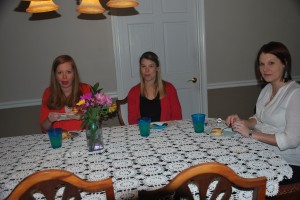Sometimes, I feel almost like a character in Hitchcock’s movie “The Birds”. I go outside to fill the feeders and see dozens of birds sitting on the limbs, watching and waiting. Sometimes I even have to shoo them away from the feeders to take them down and refill them. And yes, some of the birds are crows, or ravens, like in the movie. But they don’t wait long to swoop in and have a seat at the restaurant table. I’m filling three feeders every day (one twice a day on these cold days) and a couple need refilling every other day. So if you see some day that the Hight household has gone bankrupt, blame it on the birds!
The birds are out en mass, looking for food anywhere they can find it. I have five feeders, each with a different kind of food. Sunflower seeds in an area of the yard where I don’t mind if nothing ever grows there. Sunflower seeds give of fa chemical that will often make the ground unusable for growing stuff. That’s the price I pay for the cardinals, towhees, chickadees, nuthatches, and blue jays that visit the feeder.
Then there’s the mixed seed feeder (always get seed without Milo, as most of our native birds won’t eat this. It is a cheap filler seed companies use so they can charge less per bag. Better to pay a little more per bag than to see all those fat, brown Milo seeds scratched off the feeder and lying on the ground) I have dozens of little brown birds, mourning doves, bluebirds, nuthatches, and woodpeckers who visit the mixed seeds.
I put safflower seeds in the feeder that I know the squirrels can manage to get into. The squirrels just don’t like safflower seeds. The Cardinals and finches, titmouse and sparrows like the safflower seeds. They can be a little messy, when the birds sit at the feeder and shell the seeds. But I’m willing to sweep away the husks to keep the feeder right outside the kitchen window.
My fourth feeder is the suet basket. The woodpeckers and nuthatches, bluebirds and sapsuckers love suet. It is a great source of fat and protein, which the birds need in cold weather. Unfortunately, the squirrels also seem to like suet, so I’ve devised a baffle to keep them off the feeder. That is, until they outsmart me. Then it’s back to the drawing board for a new scheme to thwart them.
My favorite feeder is one I built of wood and glass. It has wooden ends with entrance holes on each end, cut the size of the opening in the bluebird house. The sides are two panes of glass. I pour in some dried meal worms and the bluebirds flock around. I had three males out there this morning waiting in line to be the next to have a snack. I can sit and watch them inside the feeder through the glass sides, without disturbing them while they eat. Two of them are so fat, they can barely squeeze through the opening. I guess I’ll have to put an open tray of meal worms on the picnic table for them. Bluebirds are my favorites. They stay in the yard year round, and reuse the same birdhouse every year. I often have three to four broods of baby bluebirds in a year, if I mind them well and clean out the houses as soon as the babies fledge.
On snowy days, I try to toss a handful of seeds on the ground for those ground feeding birds who can’t find food under the snow.
One of the nice things about bird feeding is that there is always something to sit and admire while they feed. There are birds that will eat only certain seeds, birds that prefer one kind of feeder over another, and ground feeding birds to clean up the mess under the hanging feeders.
This afternoon, I’ll take a piece of deadwood and drill 1 inch holes, stuff the holes with peanut butter and hang it from a tree limb. The woodpeckers and nuthatches will probably be knocking on the door to thank me!
If you are weary of being inside, put up a bird feeder. You’ll enjoy hours of pleasure watching them. And don’t forget to have a bird ID book handy. It makes it all the more fun when you actually know what kind of bird you are seeing. The girls gave me a gadget a couple of years ago that is a small scanner that will scan bar codes in my ID book. It will play the sound of the birds’ calls, so I can start to recognize the calls and know what kind of birds are in the yard at any given time, even when I don’t see them. There are several great books that can help you get started with bird feeding, naming the kinds of birds each kind of food will attract. You’re never too old or too young to become a birdwatcher. In fact, Brandi’s first word was bird, uttered while we sat at the window watching the birds at the feeder. Not exactly what a mama wants to hear first, but at least I knew she was listening and learning.


















